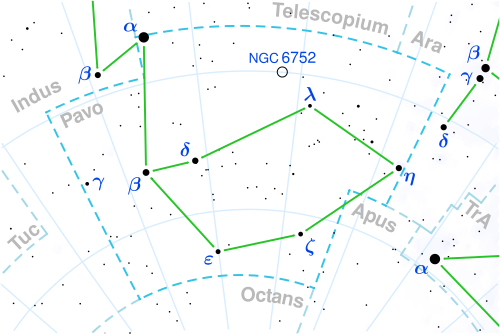| Observation data Epoch J2000.0 Equinox J2000.0 | |
|---|---|
| Constellation | Pavo |
| Right ascension | 17h 46m 32.4s |
| Declination | −57° 19′ 09″ |
| Apparent magnitude (V) | +10.75 |
| Characteristics | |
| Spectral type | M2.0V |
| Variable type | Flare star |
| Astrometry | |
| Radial velocity (Rv) | 115.00 km/s |
| Proper motion (μ) | RA: −1116.909±0.046 [1] mas/yr Dec.: −1353.927±0.047 [1] mas/yr |
| Parallax (π) | 169.8042±0.0465 mas [1] |
| Distance | 19.208 ± 0.005 ly (5.889 ± 0.002 pc) |
| Absolute magnitude (MV) | +11.92 |
| Details | |
| Mass | 0.26 M☉ |
| Radius | 0.30 R☉ |
| Luminosity | 0.0015 L☉ |
| Temperature | 3380 K |
| Other designations | |
| GJ 693 [2] , HIP 86990 [3] , Ci 20 1061 [4] , L 205-128, LFT 1372, LHS 454 [5] , LPM 655, LTT 7067, NLTT 45375 [6] , PLX 4040 [7] , TYC 8737-2175-1 [8] , 2MASS J17463427-5719081, DENIS J174634.7-571903 | |
| Database references | |
| SIMBAD | data |
Location of Gliese 693 in the constellation Pavo | |
Gliese 693 is a red dwarf star and a flare star of spectral type M2 located in the constellation Pavo, 18.95 light-years from Earth. [3]
